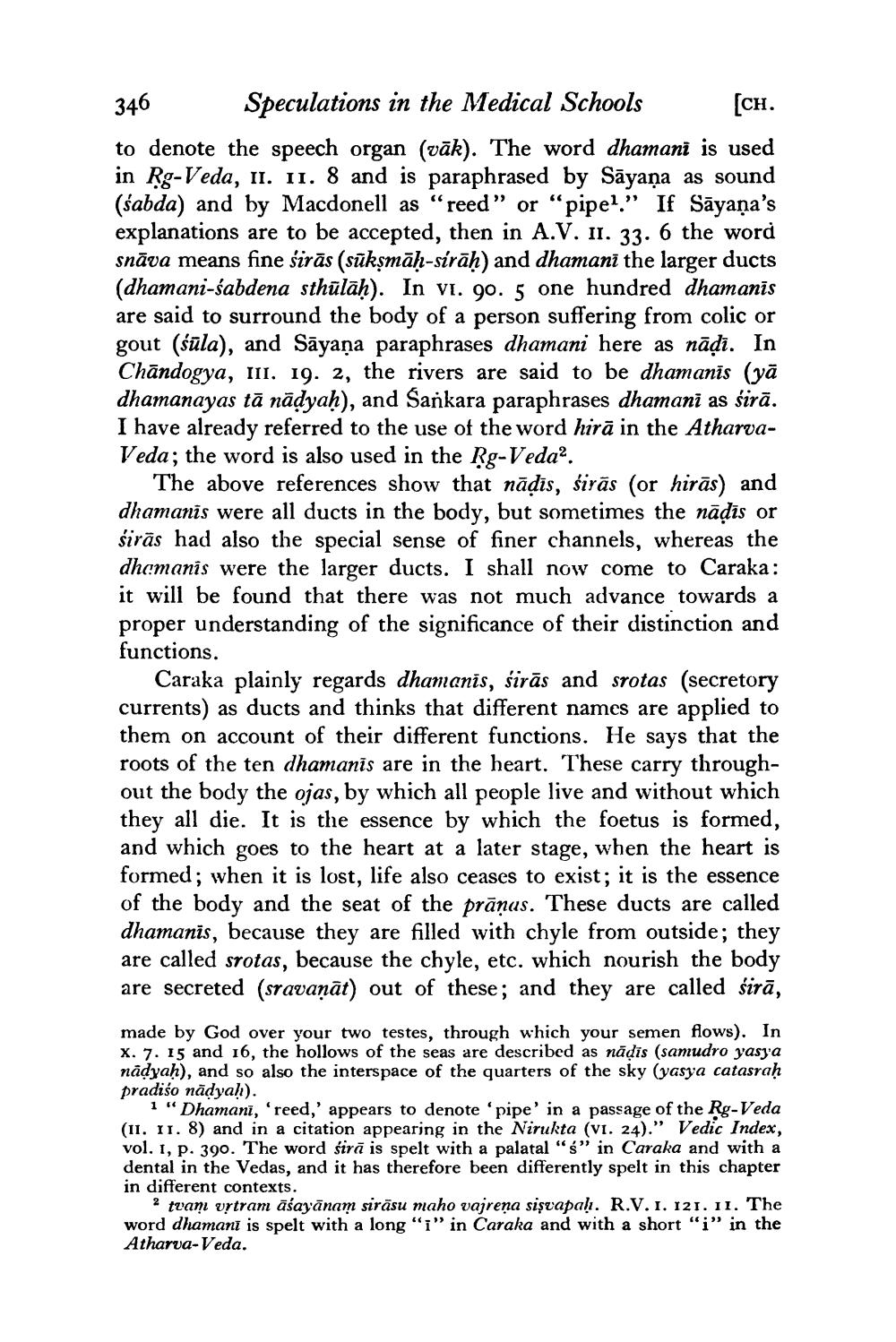________________
346
Speculations in the Medical Schools
[CH.
to denote the speech organ (vāk). The word dhamani is used in Ṛg-Veda, II. 11. 8 and is paraphrased by Sāyaṇa as sound (sabda) and by Macdonell as "reed" or "pipe1." If Sāyaṇa's explanations are to be accepted, then in A.V. II. 33. 6 the word snāva means fine sirās (sūkṣmāḥ-sirāḥ) and dhamani the larger ducts (dhamani-sabdena sthūlāḥ). In vi. 90. 5 one hundred dhamanis are said to surround the body of a person suffering from colic or gout (sula), and Sāyaṇa paraphrases dhamani here as nāḍī. In Chandogya, III. 19. 2, the rivers are said to be dhamanis (ya dhamanayas tā nāḍyaḥ), and Sankara paraphrases dhamanī as śirā. I have already referred to the use of the word hira in the AtharvaVeda; the word is also used in the Ṛg-Veda2.
The above references show that nāḍīs, sirās (or hirās) and dhamanis were all ducts in the body, but sometimes the nāḍīs or siras had also the special sense of finer channels, whereas the dhemanis were the larger ducts. I shall now come to Caraka: it will be found that there was not much advance towards a proper understanding of the significance of their distinction and functions.
Caraka plainly regards dhamanis, sirās and srotas (secretory currents) as ducts and thinks that different names are applied to them on account of their different functions. He says that the roots of the ten dhamanis are in the heart. These carry throughout the body the ojas, by which all people live and without which they all die. It is the essence by which the foetus is formed, and which goes to the heart at a later stage, when the heart is formed; when it is lost, life also ceases to exist; it is the essence of the body and the seat of the praṇas. These ducts are called dhamanis, because they are filled with chyle from outside; they are called srotas, because the chyle, etc. which nourish the body are secreted (sravaṇāt) out of these; and they are called sira,
made by God over your two testes, through which your semen flows). In X. 7. 15 and 16, the hollows of the seas are described as nāḍīs (samudro yasya nadyaḥ), and so also the interspace of the quarters of the sky (yasya catasraḥ pradiso nadyah).
1 "Dhamani, 'reed,' appears to denote 'pipe' in a passage of the Rg-Veda (II. 11. 8) and in a citation appearing in the Nirukta (VI. 24)." Vedic Index, vol. 1, p. 390. The word sira is spelt with a palatal "s" in Caraka and with a dental in the Vedas, and it has therefore been differently spelt in this chapter in different contexts.
2 tvam vṛtram āśayānam sirāsu maho vajrena sişvapah. R.V. I. 121. 11. The word dhamani is spelt with a long "i" in Caraka and with a short "i" in the Atharva-Veda.




